Table of contents of the article
ToggleThe eggplant stem borer is an insect that causes serious damage to the eggplant crop. In this article on your website, World of Plants, we explain how to deal with this dangerous insect.
Symptoms of eggplant stem borer
- Scientific name : Euzophera osseatella
- Type of disease: Insect.
- the family : Lepidopter
- The larvae of this butterfly attack the stem of the host plant and burrow into it
- It leads to the general weakness of the plant and thus it is broken by the wind
- The presence of holes caused by larvae in the leg.
- The presence of shavings containing excrement of the excavator mixed with the remnants of the excavator's food is seen at the mouth of these holes.
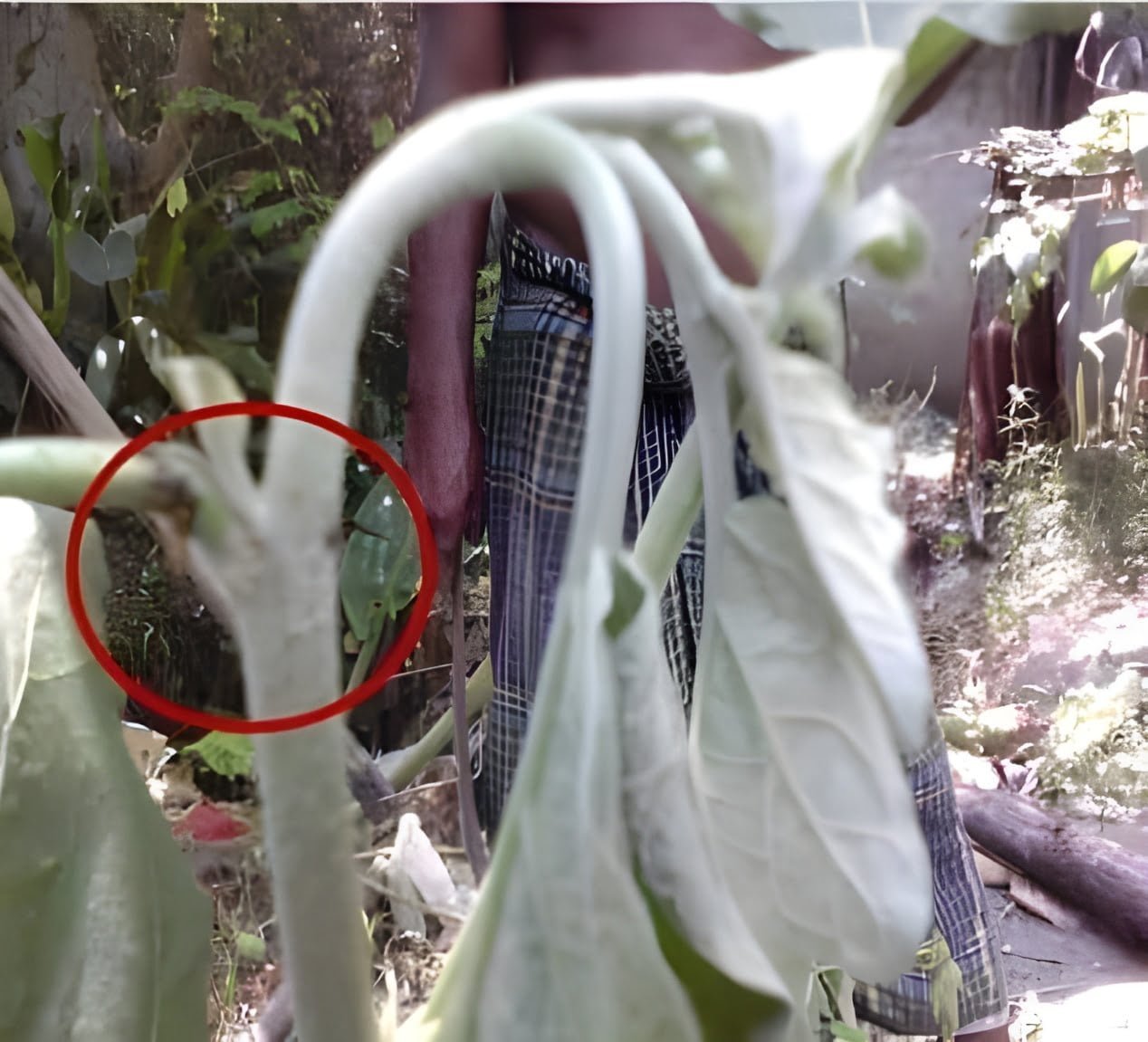
Description of the insect
- The adult insect is a yellowish-brown butterfly. It is 6-8 mm long. There is a dark brown spot in the middle of the front wings, and there are two zigzag lines on the outer edge. The hind wings are white, while the veins are yellow.
- Larvae: The color of the larvae in its final stage is yellowish white and the head color is dark brown. Its final length reaches 15 mm
- The pupa is brown in color, located inside a white silk cocoon.
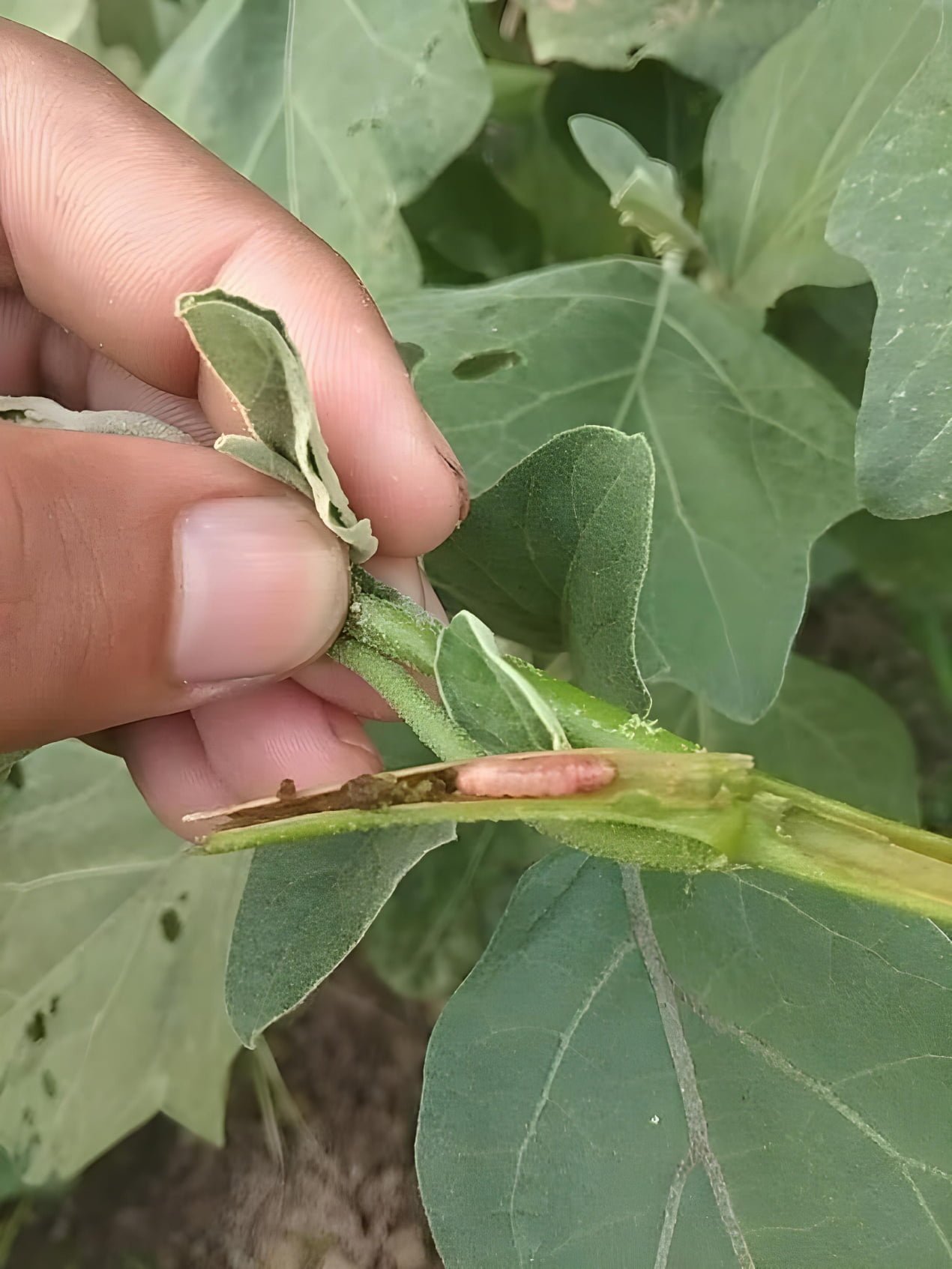
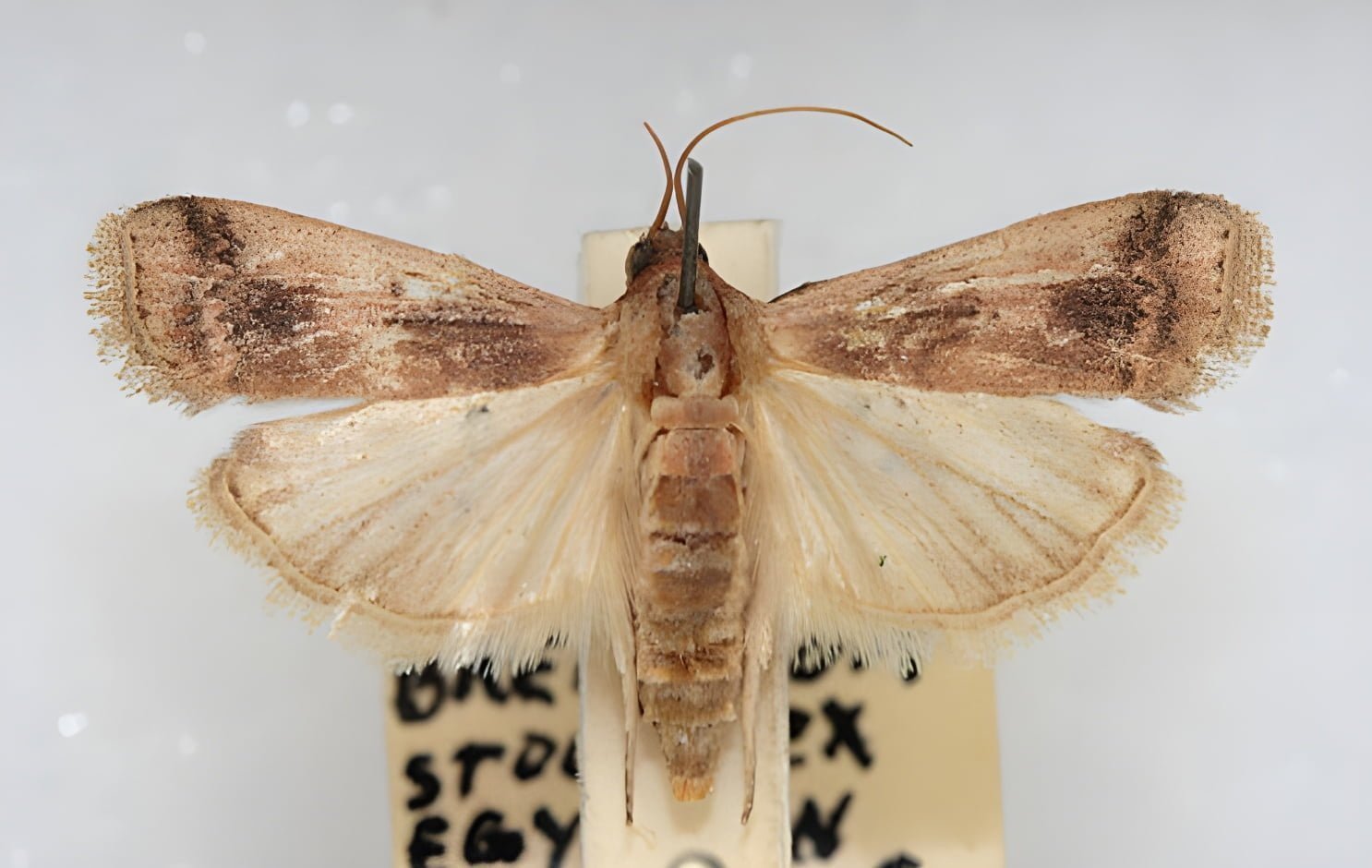
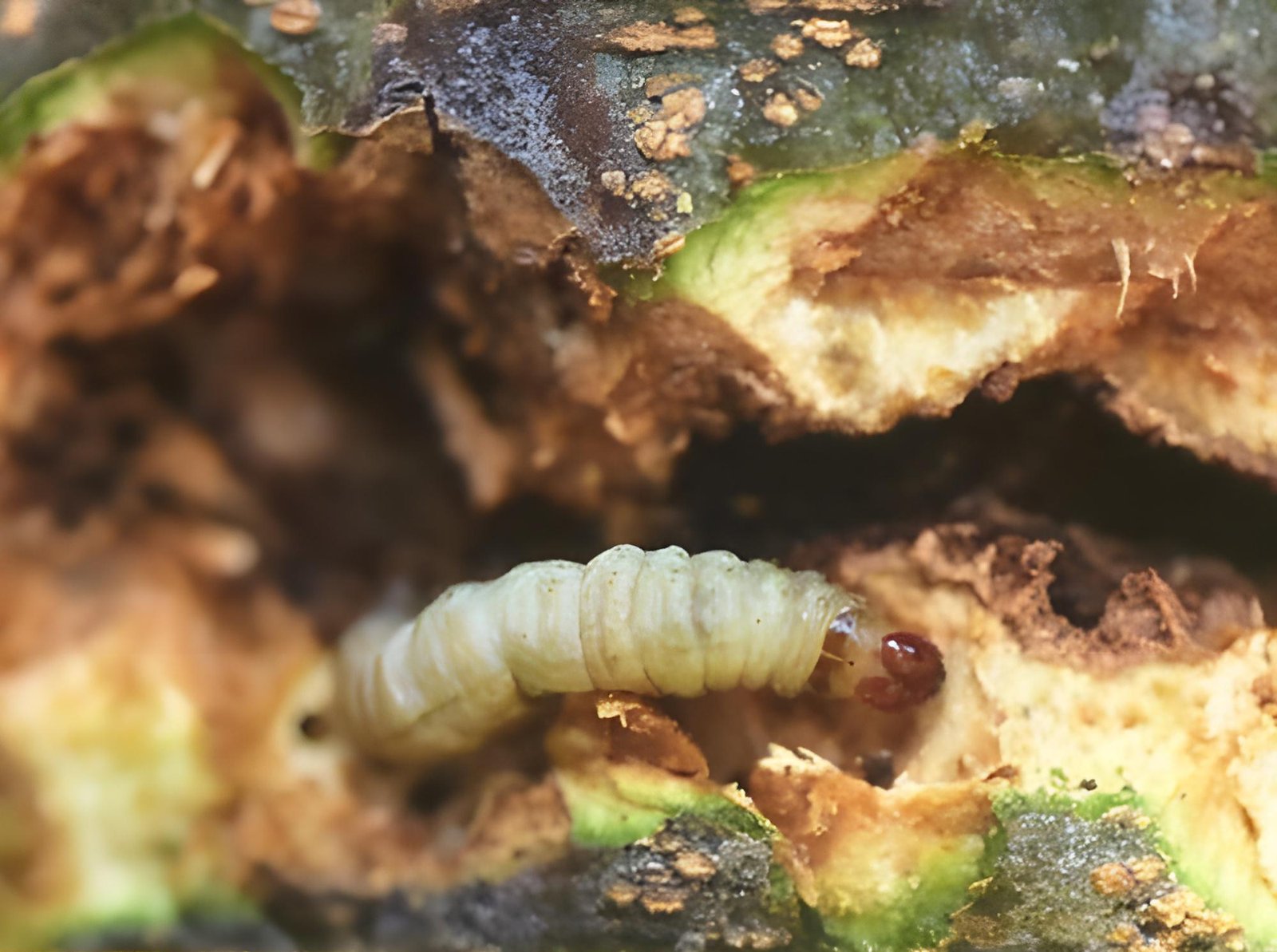
Causes of eggplant stem borer
- It infects the Solanaceae family, and its infection is most severe in areas that grow eggplant or potatoes
- The “pupal stage” insect spends the winter hibernation in infected plant remains, and the infestation of this insect is most common in the winter shoot.
- The infection is observed in crops that are harvested in January.
- The presence of weeds in the field, especially hemp
- The temperature should be at 26.3
- Relative humidity 69%
Suitable conditions for the spread of eggplant stem borer
- Eggplant stem borer infestation increases during the winter season, and decreases in the summer season.
- It increases when there are nearby crops that are infected and have not been treated.
Eggplant stem borer development cycle
- In winter, larvae are found inside the stems of the host plant or among crop residues in the soil
- In the spring, these larvae pupate inside a white silk cocoon
- The moulting period lasts for 2-3 weeks, after which the adults appear
- Adults are active at night during the month of May.
- The female begins laying eggs individually after mating
- The incubation period for eggs is 7.5 days, depending on environmental conditions
- The hatched larvae begin to burrow into the stem near its base. . They burrow inside, facing downward. The larvae complete their development within 5-6 weeks and then turn into pupae at the same site of infection.
- After turning into a pupa, these insects continue their life cycle. The larvae of the last generation are the ones that enter a dormant phase to spend the winter
Losses from the spread of eggplant stem borer
The infection results in loss of the vegetative system and damage to a percentage of the fruits
It is one of the most dangerous pests and causes significant losses that may reach the loss of 50% of the crop.
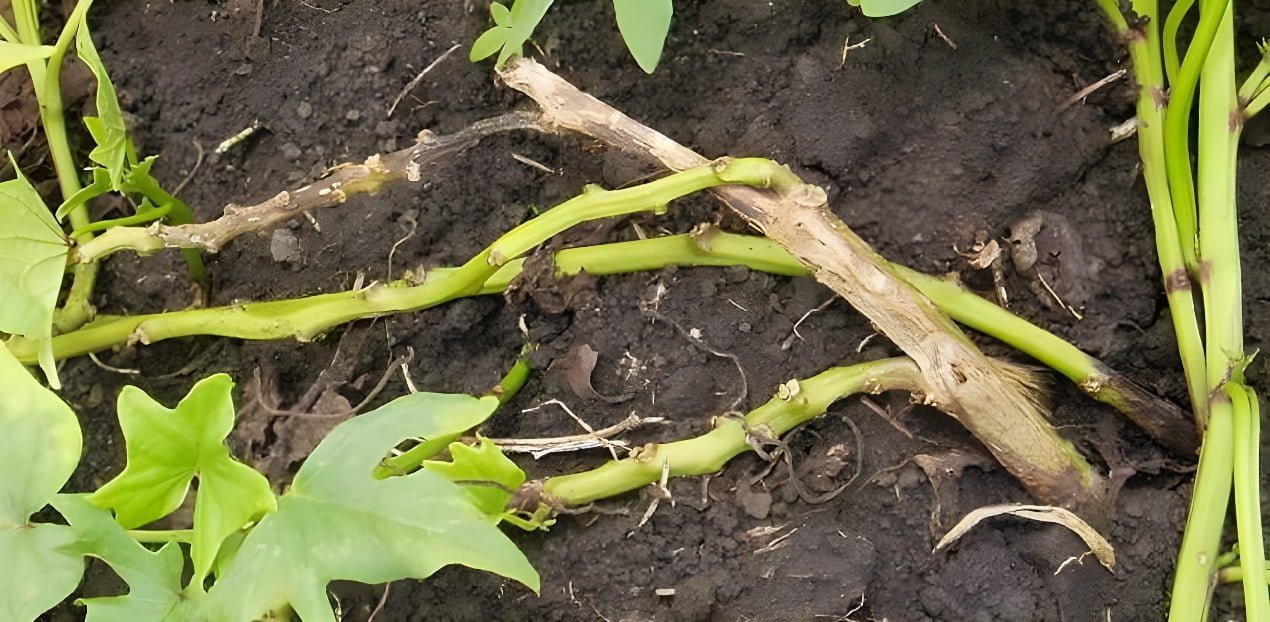
Control strategy
Preventive measures to prevent the occurrence of eggplant stem borer
- Removal of plant waste.
- Disposing of the remains of the previous pepper crop by burning
- Follow the agricultural cycle system.
- Planting inside plastic shades.
- Weekly get rid of infected branches by cutting them from the plants and burning them.
- Tilling and turning the soil.
Chemical and organic control recommendations against eggplant stem borer
- Organic control
- Create a vertical barrier of nylon fabric surrounding the pepper field when planting, at a height of two meters, with an external bend 40 cm wide and at an angle of 80 degrees with the vertical barrier to prevent the migration of butterflies (as they are weak to fly) from neighboring fields.
- Delta-type pheromone traps or plastic traps can be used at a rate of 1-2 traps/acre to identify when the insect begins to appear and help combat it.
- Chemical control:
- Chemical control is directed against adults and during egg laying to eliminate newly hatched larvae, before they enter the stem.
- You can use one of the following pesticides: Anthio-Lipacid and other modern pesticides
In conclusion, we would like to note that we, at the world of plants website, offer you all the necessary services in the world of plants, we provide all farmers and those interested in plants with three main services::-
- Artificial intelligence consulting service to help you identify diseases that affect plants and how to deal with them.
- Blog about plants, plant diseases and care of various crops ... You are currently browsing one of her articles right now.
- An application that provides agricultural consultations to clients, as well as a service for imaging diseases and knowing their treatment for free – Click to download the Android version from Google Play Store، Click to download the IOS version from the Apple App Store.
References
- – Abdellatif, MA, El‐Sherif, SI, & Afifi, FML (1971). Annual Generations and Life History of Euzophera osseatella Treit.(Lepid., Pyralidae). Zeitschrift für Angewandte Entomologie, 68(1‐4), 367-373.
- ALI, AM, ESSA, EI, ABD EL-WAHAB, HA, & OODA, M. (2011). THERMAL CONSTANT AND DEGREE-DAY REQUIREMENTS FOR THE DEVELOPMENT OF THE EGGPLANT STEM BORER, EUZOPHERA OSSEATELLA TRIET.(LEPIDOPTERA: PYRALIDAE). Egyptian Journal of Agricultural Research, 89(3), 899-906
- Harakly, F. A. (1965). External morphology and life‐history of the egg‐plant stem borer Euzophera osseatella Treit.(Lepidoptera, Pyralidae). Bull. Soc. Ent. Egypte, 49, 259-276.:
- Annual Generations and Life History of Euzophera osseatella Treit – WILEY ONLINE LIBRARY
- THERMAL CONSTANT AND DEGREE-DAY REQUIREMENTS FOR THE DEVELOPMENT OF THE EGGPLANT STEM BORER, EUZOPHERA OSSEATELLA TRIET – Egyptian Journals
- BIOLOGICAL ASPECTS AND LIFE TABLE PARAMETERS OF THE EGGPLANT STEM BORER, Euzophera osseatella Treit – Egyptian Journals




